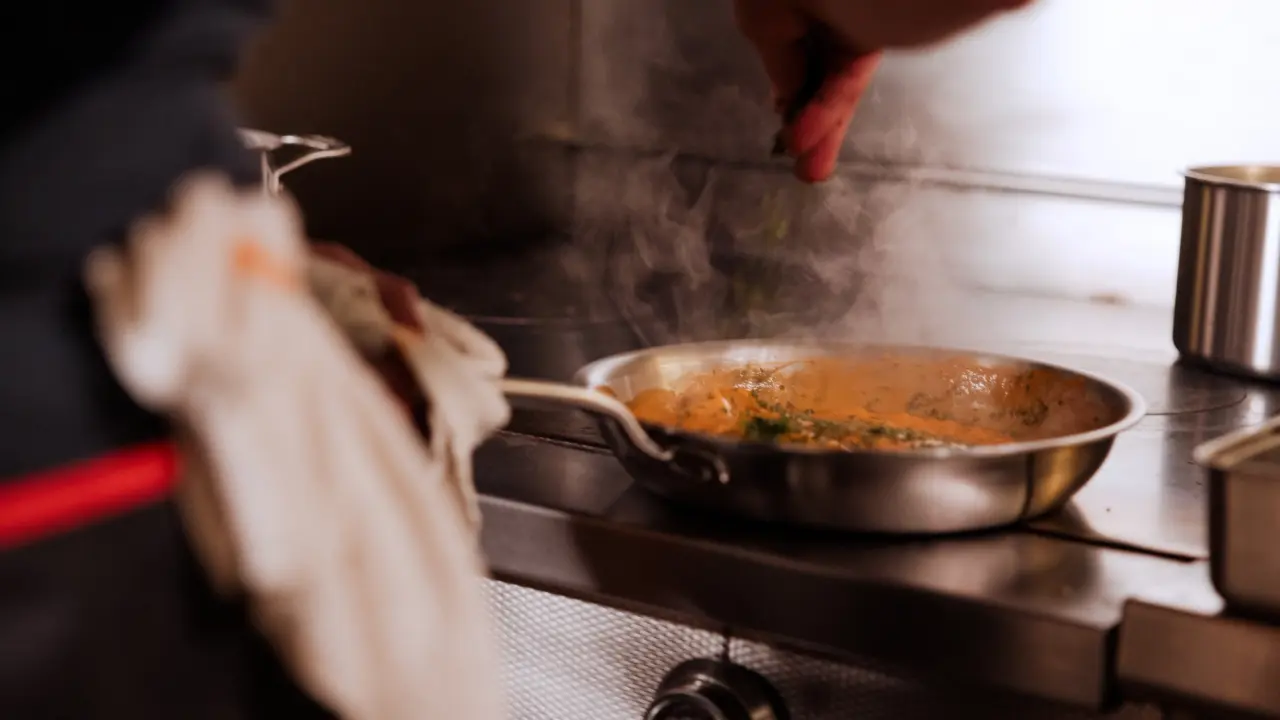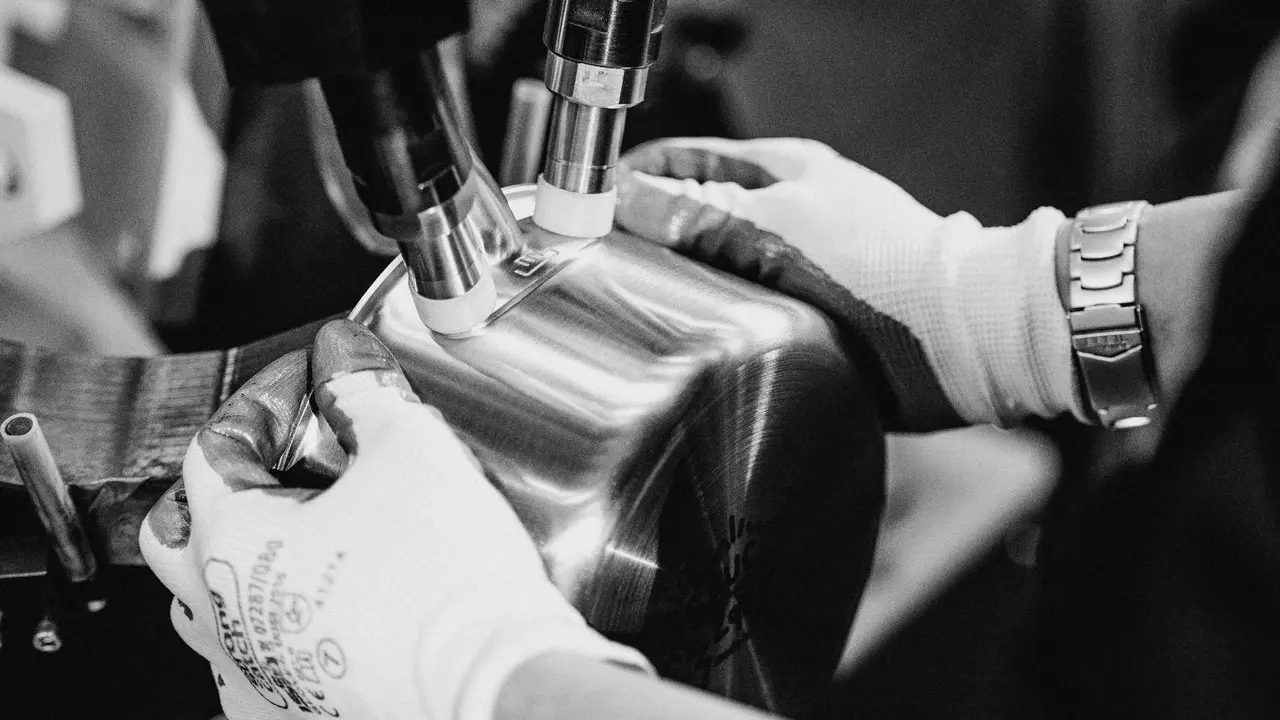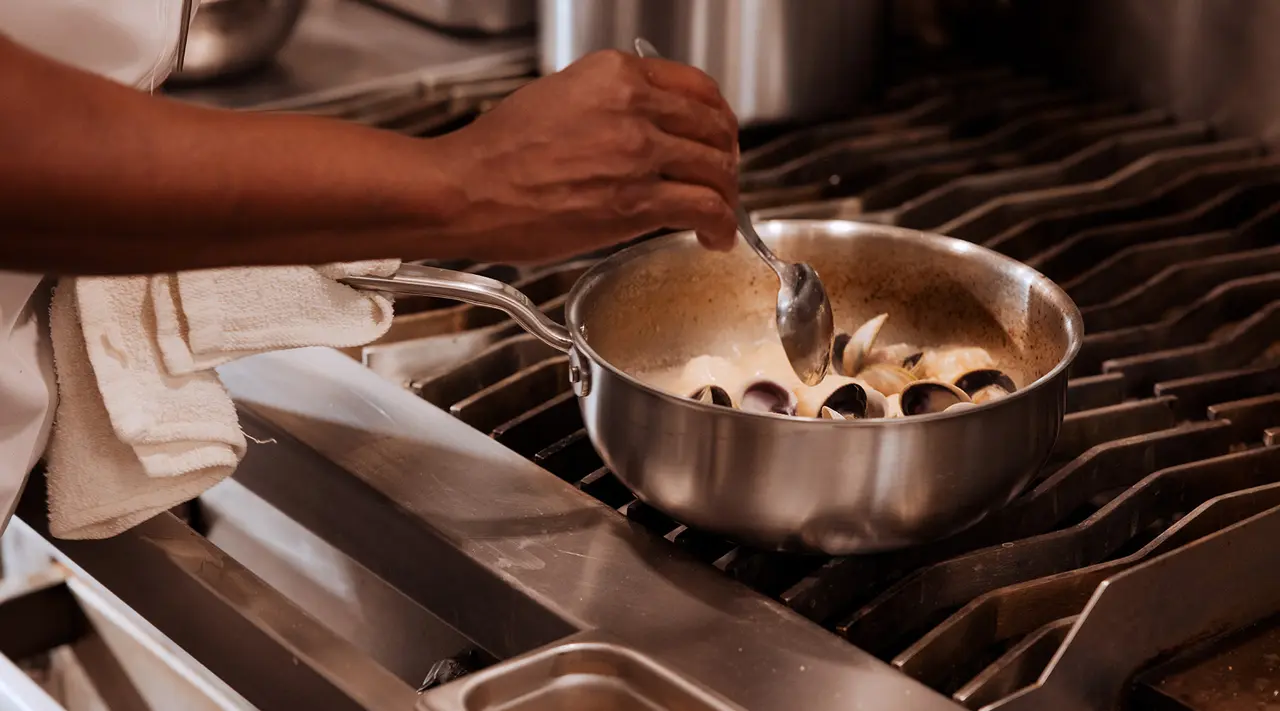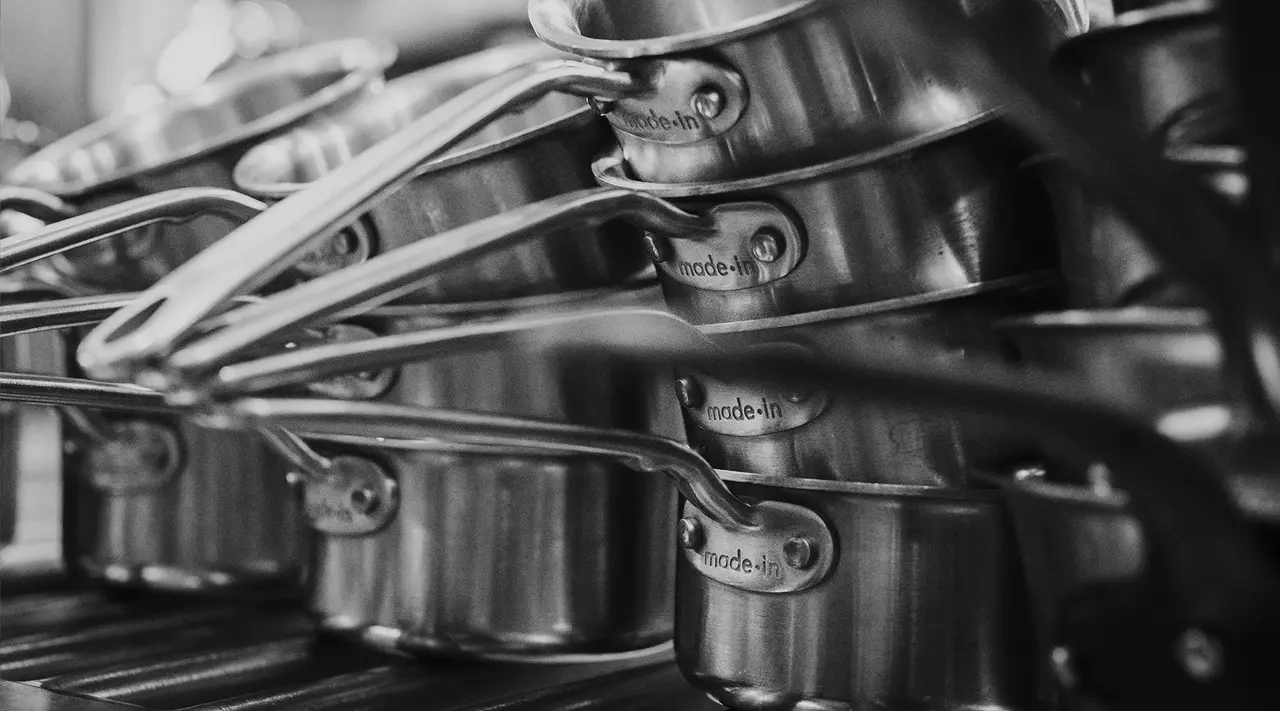As much as we love cooking with our stainless cookware, we know all too well that not all stainless steel is created equal. Price points vary wildly, and it’s tough to decide whether or not it’s worth it to spring for a pricier pan—especially when it looks virtually the same as a cheaper one.
So what exactly makes up the difference between different stainless steel cookware products? It all, more or less, comes down to cladding, or the process of bonding different metals together to form a single, solid piece of cookware. We’ll explain exactly why cladding is important, why certain metals need to be combined with others, and—most importantly—how this actually matters to you, the cook.
What Is Cladding?

In cookware, “cladding” refers to the process of layering (or “sandwiching”) stainless steel with other metals, like aluminum and High Grade Ferritic 430, then bonding those layers together to form a single sheet of metal. In a fully clad pot or pan (like our Stainless Clad collection), those layers extend all the way through the base and up the sides to make for more even heat distribution, better conductivity, and an overall more durable piece of cookware.
What are the Different Types of Cladding Materials?
There are a few different types of materials typically used for cladding, thanks to their heat conductivity abilities.
Aluminum
Stainless steel is durable, beautiful to look at, and makes for a smooth and nonreactive cooking surface, but it’s not the best at conducting heat. This is where aluminum comes in. By sandwiching stainless steel with a layer of aluminum, you get all the benefits of stainless steel along with the excellent conductive properties of aluminum.
Copper
Copper is sometimes used in place of, or in addition to, aluminum, as it’s also an extremely efficient conductor of heat. Since it’s a more expensive metal to work with, however, the inclusion of copper can also raise the price point of stainless cookware.
How Does Cladding Work?

Each layer in a piece of stainless clad cookware is called a “ply.” Cookware labeled 3-ply is made with three layers of different metals, while 5-ply is made with five layers—easy enough to remember.
But is there really any significant difference between 3-ply and 5-ply, and is 5-ply worth the additional cost? We say yes—especially when it comes to durability and searing quality. While you can find plenty of solid 3-ply options on the market, 5-ply is even more resistant to scratching and warping, and will heat more quickly and evenly than 3-ply.
Here’s the general layout of how cladding works with cookware like our Stainless Clad collection.
1. Top Layer: Stainless Steel
Stainless steel is the icing on top of the stainless clad cake. Highly resistant to rust and corrosion, as well as virtually scratch-proof, it’s an ideal cooking surface—at least when it’s combined with other metals, as we get into below.
2. Middle Layer(s): Conductive Material (e.g., Aluminum or Copper)
Beneath that top layer of stainless steel is a layer of aluminum or copper, both of which are extremely conductive. In our Stainless Clad line, each piece of cookware is made with two layers of aluminum along with a layer of aluminum alloy, which has magnesium and manganese added for increased strength and hardness.
3. Bottom Layer: Stainless Steel
The bottom layer of our Stainless Clad cookware is composed of High Grade Ferritic 430, another type of stainless steel that’s even more durable as well as induction compatible.
Benefits of Cladded Stainless Steel Cookware

A fully clad stainless steel frying pan or pot isn’t just a stack of different metals: it’s a single, wildly efficient piece of cookware that offers much more than the sum of its parts. On their own, neither stainless steel nor aluminum are particularly efficient or durable cookware materials; when combined, however, they work beautifully.
Where aluminum is a reactive material and more prone to warping and other damage than stainless steel, it’s a much better conductor of heat than stainless—which makes up for its lack of poor conductivity by offering a tough, warp-resistant cooking surface.
Here are just a few more of the many reasons cladded cookware is worth the price.
Even Heat Distribution
Through the cladding process, the different metals used in our Stainless Clad cookware are bonded together, combining the excellent conductivity and heat distribution of aluminum with the food-safe, anti-rust and corrosion-resistant properties of stainless steel.
Enhanced Cooking Performance
A piece of fully clad stainless steel cookware isn’t just durable, of course; it’s also an absolute joy to cook with. Because stainless clad conducts and distributes heat so evenly, without any cold spots, you’ll be able to better control the temperature of your pan.
Versatility in Cooking Styles
While stainless clad is excellent for searing steaks and chops, it’s also responsive enough to cook delicate things like eggs or fish that require more delicate heat. Plus, if you remember to properly preheat it, your stainless clad pan can even offer a virtually non stick cooking surface (though not quite on par with non stick).
Ready to Shop?
Fully clad stainless steel cookware isn’t just great to cook with; it’s also an investment that’ll last for decades, if not an entire lifetime. Whether you’re a restaurant cook searing steaks and fish on a nightly basis, or a home cook looking to upgrade your cookware collection, our Stainless Clad Collection is the perfect place to start.






























